Most Important Classical Trumpet Soloists Prior To 1970
Most Important Classical Trumpet Soloists Prior To 1970
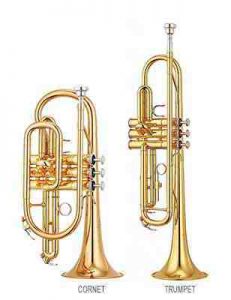
Cornet Compared To A Trumpet
Between 1870 and 1920, the cornet was considered “KING” of solo ‘classical style’ musical literature. There were many scores of virtuoso cornet soloists between the United States and Great Britain that performed extremely difficult, solo cornet compositions with bands rather than orchestras during this period that required true virtuoso skills to convincingly perform well.
Between 1870 and 1920 the popularity of the cornet
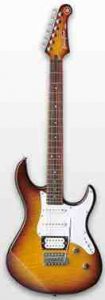
Electric Guitar
in popular live performances and early recordings is comparable to the overwhelming popularity of the electric guitar that began in the early 1950’s.
The brilliant Herbert L. Clarke (1867–1945) was the best-known cornet soloist in America during the first two decades of the twentieth century. Clarke is remembered today as the author of several excellent musical etude training books for the cornet and as the composer of many solo works for the cornet. Clarke served as
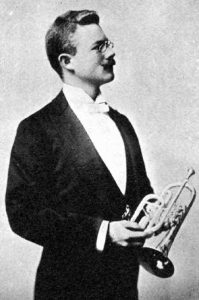
Herbert L. Clarke Holding His Cornet circa early 1890’s.
cornet soloist for Sousa’s Band and conducted that ensemble on many Victor records. Clarke was also the conductor of Clarke’s Band of Providence (formerly the American Band of Providence) and recorded over one hundred titles with that ensemble between 1900 and 1903. Clarke recorded many of his original cornet solos for Victor, Berliner, Columbia, Edison, and Brunswick.
By 1930, the use of the cornet began to gradually wane in favor of the trumpet. Cornets began to be associated with an “old style” concert band as well jazz music and the trumpet became favored with “new” music associated with the string orchestra, dance and jazz bands. Consequently, the use of a cornet become passé.
Also, the popularity of jazz trumpet players such as both
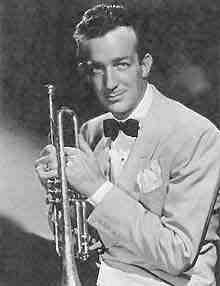
Harry James holding his trumpet circa 1940
Louis Armstrong and Harry James also discouraged
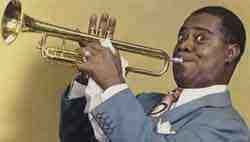
Louis Armstrong playing his trumpet circa 1950
the earlier popular use of the cornet in popular jazz oriented music as well. And, the cylindrical design of the trumpet compared to the conical tubing design of the cornet caused the trumpet to produce a more brilliant tone, project further, play louder, and made it somewhat easier to play in the high register compared to the cornet.
By 1970, there were only a small number of well known ‘Classical’ trumpet soloists. The six most prominent classical trumpet soloists in the world prior to 1970 were Rafael Méndez, Adolph Scherbaum, Maurice André, Timofei Dokschitzer, Armand Ghitalla, and Edward Tarr.
They are referenced below by order of the time frame that their performance skills began to generate a significant level of prominence within the classical music universe.
Rafael Méndez
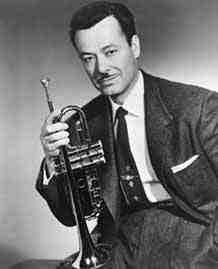
Rafael Méndez
1. Rafael Méndez (1906-1981) became active as an American trumpet soloist from the 1940’s to the mid-1970’s.
Rafael Méndez was a remarkably gifted classical trumpet soloist who was born in Mexico in 1906.
Méndez’s virtuosity caused critics to frequently referrer to to him as the “Heifetz of the Trumpet”.
From 1950 to 1975, Méndez was a full-time trumpet soloist. At his peak, Méndez performed about 125 concerts per year. Méndez was also very active as a recording artist. By 1940, Méndez was in Hollywood, leading the brass section of the MGM studio orchestra.
Méndez was legendary for his beautiful, brilliant tone, exceptional range, extraordinary breadth control, polished technique, and unparalleled single, double, and triple tonguing skills that was characterized by incredibly clean, rapid articulation.
The Méndez repertoire was a mixture of classical, popular, jazz, and Mexican folk music. Méndez contributed many arrangements and original compositions to the trumpet repertoire. The Méndez Scherzo in D minor is often heard in recitals to this day.
Méndez is regarded as popularizing “La Virgen de la Macarena”, commonly known as “The Bullfighter’s Song”, to US audiences.
Méndez most remarkable, if not most famous single recording, “Moto Perpetuo”, was written in the eighteenth century by Niccolò Paganini for violin and features Mendez double-tonguing continuously for over 4 minutes while circular breathing to give the illusion that Méndez is not taking a natural breath while playing the trumpet.
The following is a YouTube recording of a Rafael Méndez recording entitled “The World’s Most Versatile Trumpeter” that was recorded in the late 1950’s.
Adolph Scherbaum
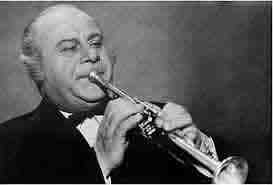
Adolf Scherbaum playing his silver, 3 rotary valve trumpet of German origin.
2. Adolph Scherbaum (1909-2000) became a well established trumpet German soloist by the Mid-1950’s
Adolph Scherbaum (Also View – Edward Tarr European History Tour) was a German based trumpet player who established himself as a specialist in performing the high ‘clarino’ trumpet parts of the Baroque compositions of Bach, Handal, and Vivaldi and others of this period. These compositions were rarely performed by trumpet players over hundreds of years until Scherbaum performances of these musical compositions began in the mid-1950’s. (Prior to this time, the high Baroque trumpet parts were actually being routinely performed by orchestral clarinetists.)
On a comparative basis, it should be apparent to the listener of the YouTube hosted recordings that are referenced on this page, that although Scherbaum could certainly play the trumpet in the highest register with little difficulty, the quality and purity of tone, articulation, and overall musical phrasing were at least to some degree inferior to the other five classical trumpet soloists that are noted. However it is interesting to hear that the quality of the tone that Scherbaum produced on his recordings was far more refined than the tone that Scherbaum produced during the course of a demonstration Scherbaum performed to the members the Edward Tarr European History Tour.
The following circa 1960 recording features Scherbaum performing the 2nd movement of Telemann’s Concerto a Quattro with a chamber orchestra in Amsterdam.
This following very rare Deutsche Grammophone recording – Adolf Scherbaum – Five Famous Concertos For Trumpet
The audio quality of this recording is quite good.
Maurice André
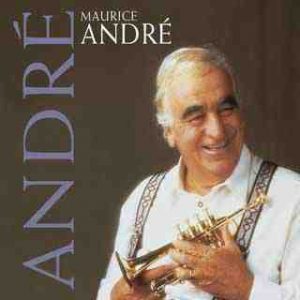
Maurice André Holding a Selmer 4 Piston Valve Piccolo trumpet that he personally designed.
3. Maurice André (1933-2012) became a well established French trumpet soloist by the Early to mid-1960’s –
Maurice André rose to international prominence in the 1960’s and 1970’s with a vast series of outstanding recordings of baroque era works performed on piccolo trumpet for Erato and other labels. André also performed many transcriptions of works for oboe, flute, and even voice and string instruments. André had over 300 audio recordings to his name, from the mid-1950’s to his death.
André’s recorded output was radically more than any other classical trumpet soloist in world history.
Maurice André became renowned the world over for superlative musicianship, dazzling technical skill, and and magnificent tone quality.
Much of André’s acclaim was gained by his remarkable performances on a specially made French Selmer “piccolo” trumpet (with four piston valves) that was pitched exactly one octave higher than a standard B flat trumpet for performances in the higher register. André firmly established the standard B Flat, C, D/E Flat, and piccolo B Flat/F trumpets as solo classical instruments.
The Author of this essay, Bob Amato had the opportunity to hear Maurice André perform two solo trumpet recitals in the United States accompanied by a pianist.
The first Maurice André solo recital took place in the late winter or early spring of 1969 in New York City. André performed his New York Town Hall Recital Hall debut at that time on a Sunday afternoon. Town Hall seats 1500 people and the performance was completely sold out. In attendance were many of the finest classical, commercial, and jazz trumpet players in the entire North East United States.
Bob attended this performance with his trumpet instructor, Professor Wally Chesnut from the University of Massachusetts in Amherst. Professor Chesnut was able to get excellent center section along the left center aisle that were no more than 15 rows from the recital stage.
The great commercial trumpet player, Doc Severinson sat several rows behind Professor Chesnut and his student, Bob. The great, jazz trumpet player Clark Terry was also seated near Professor Chesnut and his student, Bob as well. Also in attendance was New York Philharmonic principal trumpet, William Vacchiano.
Bob Amato remembers this 1969 performance to this day like it was yesterday…In order of performance, André performed:
Artrunion trumpet concerto B flat trumpet
Haydn – E flat trumpet
Tartini – Piccolo trumpet
Jolivet Concertino – C Trumpet
André transitioned from one selection to another without a break other to acknowledge applause. At the end of the Jolivet Concertino, André popped a concert pitch “High G” quarter note ‘BOP’!
The audience erupted into a thunderous standing ovation. The performances were completely flawless.
André played an unaccompanied encore on piccolo trumpet…an excerpt of his transcriptions that Bob cannot remember.
André concluded the recital with a ‘question/answer’ session with the assistance of a French translator.
Someone in the Town Hall recital audience asked if André had any interest in Jazz. Andre picked up his B flat trumpet and banged out some Maynard Ferguson style high register jazz licks. The audience went wild once again.
The virtuosity of Maurice André cannot be overstated. Maurice André performed many, many, hundreds of live concert hall performances during the course of his illustrious, solo trumpet career. All of André live performances were every bit as flawless as were the performances on his over 300 recordings.
Along with his contemporary and peer, Timofei Dokschitzer whose bio is referenced below, Maurice André is considered one of the two greatest classical trumpet soloists that have ever lived.
Maurice André live performance of the Tartini Trumpet Concerto on Piccolo Trumpet.
Timofei Dokshizer
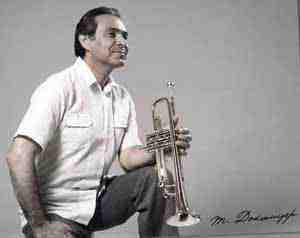
Timofei Dokshizerr circa 1950’s
4. Timofei Dokshizer (1921-2005) became a well established Russian trumpet soloist by the Early to mid-1960’s – (Also, see The Memoirs of Timofei Dokshizer)
https://en.wikipedia.org/wiki/Timofei_Dokschitzer and http://www.dokshizer.com/eindex.html
The extraordinarily talented, Timofei Dokshizer was born into a family of musicians on December 13, 1921 in Nizhyn, Ukraine.
Dokshizer acquired his initial musical education at the Glazunov Music College in Moscow under the direction of Ivan Vasilevsky. Dokshizer continued his studies at the Central Music School in Moscow and was enrolled the class of professor Mikhail Tabakov. In 1950, Dokshizer graduated from Gnessin’s Music Institute in Moscow under the supervision of Mikhail Tabakov as well. Timofei Dokshizer went on to receive his Master Degree in conducting from the Moscow State Conservatory in 1957 where Dokschitzer studied with Leo Ginzburg.
At age of 19, Timofei Dokshizer won the Soviet-Union brass instruments’ players competition and in 1947 as well as the International Competition in Prague which was actually the first year that this famous competition took place. The acclaim that Dokshizer garnered after winning both of these prestigious competitions launched Dokshizer’s performance career. From that point on, Dokshizer’s profound artistry and creativity set a standard of excellence for other trumpeters to follow throughout the entire world.
Timofei Dokshizer frequently toured the USSR and abroad, garnering acclaim from critics
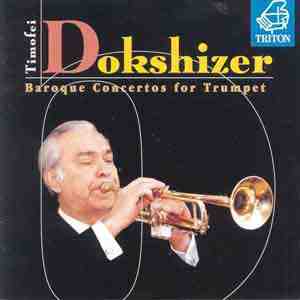
Timofei Dokshizer recording featuring works from the Baroque Era.
who praised Dokshizer’s timber, beautiful tone, uniquely, magnificent musical phrasing, and extraordinary technique. In addition to his solo performances, Dokshizer worked at the Bolshoi Theatre of Opera and Ballet in Moscow for about 30 yeaers. With both of these fine theatre orchestras, Dokshizer was uniformly revered for his brilliant renditions of some of the most difficult orchestral trumpet solos.
Timofei Dokshizer’s very distinctive and magnificent musical phrasing as well as tone quality was developed out of Dokshizer’s love of Opera and his playing emulates a profound Operatic influence.
During the Soviet era, it was not easy for citizens of the Soviet Union to travel to countries other than those with which the Soviet Union was friendly with. Consequently, Dokshizer’s exposure to Western European countries, the United Kingdom, and all of the Western Hemisphere was unfortunately quite limited compared to Dokshizer’s contemporary, Maurice André.
However, Dokshizer traveled as a member of the Soviet State Orchestra on a famous one time tour to the United States in 1961.
In the United States, Dokshizer met many famous trumpet oriented celebrities such as Vincent Bach, Renold Schilke and Louis Davidson. Louis Davidson took special personal interest in Dokshizer and a close friendship developed between the two of them.
Of other celebrity trumpet players that Dokshizer met on his many musical tour performances, a notable meeting with Maurice André was mentioned in The Memoirs of Timofei Dokshizer.
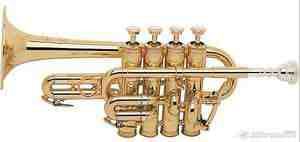
Selmer 59BLF Series Bb/A Piccolo 4 Piston Valve Trumpet
At the conclusion of this meeting, André presented to Dokshizer a Selmer 4 piston valve piccolo trumpet and a profound thank you to Dokshizer for Dokshizer’s particpation in this meeting. Dokshizer resuscitated his own thank you by providing to André of the orchestral score of the famous Arutunian trumpet concerto which became Dokshizer’s ‘signature’ concerto that Dokshizer performed many times throughout his remarkable career.
Timofei Dokshizer’s repertoire was vast. The Dokshizer repertoire nearly every composition ever written for the trumpet which included Bach, Haydn, Hummel, Albinoni and Vivaldi to Dokshizer’s contemporaries which included Shostakovich, Wainberg, Schedrin, Gershwin and many others.
Many musical compositions performed by Timofei Dokshizer were rendered by his own transcriptions of oboe, violin, and vocal solo literature. There were over 80 Dokshizer musical literature transcriptions that Dokshizer compiled during the course of his lifetime.
Timofei Dokshizer was responsible for an enormous expansion of the classical trumpet repertoire. This notable expansion of the classical trumpet repertoire was enabled both through Dokshizer’s own contribution to the classical trumpet art form and by way of original compositions written especially for Dokshizer throughout his lifetime.
For almost 25 years, Timofei Dokshizer’s career was dedicated to teaching
Dokshizer was a professor at the Gnessin’s Music Institute and his teaching skills developed numerous fine professional classical trumpet players that actively performed in the latter quarter of the 20th century in Eastern European countries that comprised the former Soviet Union.
Timofei Dokshizer conducted and adjudicated countless teaching seminars, master classes, international competitions and festivals. Dokshizer moved to Vilnius, Lithuania in 1990 where he lived until his passing on March 16, 2005.
The virtuosity and advanced musical attributes that Timofei Dokshizer brought to the classical trumpet are as equally noteworthy as those of Maurice André.
Like André, Timofei Dokshizer became renowned the world over for superlative musicianship, dazzling technical skill, and and magnificent tone quality.
Because of geographical and political circumstances, Timofei Dokshizer did not gain the acclaim that Maurice André garnered in the Western Hemisphere in particular due to lack of exposure due to the Soviet era disputes with countries such as the United States and Canada.
However, the classical trumpet solo performance skills of both Timofei Dokshizer and Maurice André remain unparalleled into the 21st Century.
What sets Timofei Dokshizer and Maurice André apart from all other classical trumpet players, is the fact that each and everyone of their large number of “LIVE” solo musical performances were performed as consistently flawless as their recordings.
According to Maurce André, “Timofei and I had great admiration for each other”
See – http://www.maurice-andre.fr/liensengl.html
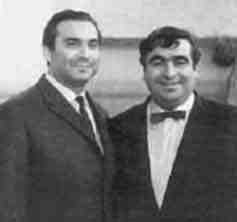
Timofei Dokshizer and Maurce Andre circa mid to late 1960’s
It is folly to dwell over which of these two masterful classical trumpet soloists was better than the other.
The contributions of both Timofei Dokshizer’s and Maurice André’s exceptional talents, must place both of these extraordinary artists on the same level as Jascha Heifetz, Jean-Pierre Rampal or Sviatoslav Richter.
Timofei Dokschitzer performing the Arutunian Trumpet Concerto for B Flat Trumpet that his hosted on YouTube.
Armando Ghitalla
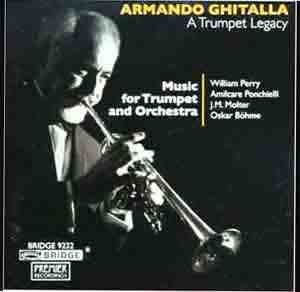
Armando Ghitalla
5. Armando Ghitalla (1925-2001) became a well established American trumpet soloist by the mid-1960’s
Armando Ghitalla was born in Alpha, Illinois, and his family moved to Knoxville, Illinois, shortly after he was born. At age 8, he decided he wanted to play the trumpet.
Armando Ghitalla was a member of the Boston Symphony Orchestra for 28 years and served as principal trumpet for his final 15 years with this orchestra.
While serving as principal trumpet with the BSO, Ghitalla was considered to be one of the very finest orchestral trumpet players in the world.
Prior to 1970, Ghitalla was one of the exceedingly few classical trumpet players that performed in a symphony orchestra who actively performed and recorded both solo trumpet and brass ensemble compositions. The brass ensemble performances consisted of members of the Boston Symphony Orchestra.
Ghitalla is best known for his fine 1964 Cambridge Records recording of the Hummel Trumpet Concerto in E Major.
Ghitalla capably performed this concerto on C Trumpet. (Almost all modern performances of the Hummel Trumpet Concerto in E Major are transposed down a 1/2 step to the key of E Flat. And, are performed on a modern E Flat trumpet.)
Although Armando Ghitalla’s live performance and recorded performances of solo classical trumpet literature were not nearly as prolific as the other five trumpet players referenced in this essay, Ghittala’s excellent efforts as a classical trumpet soloist are certainly worth noting.
For much of Armando Ghitalla’s orchestral career, Ghitalla was considered to be one of the very finest trumpet teachers in the entire Western Hemisphere.
Ghitalla served on the faculties of Boston University, the New England Conservatory, the Hartt School of Music at the University of Hartford, the Tanglewood Music Center and the University of Michigan. At the time of his death, he was on the faculty of the Shepherd School of Music at Rice University.
Hummel Trumpet Concerto in E hosted on YouTube and performed by Armando Ghitalla performed on a C Trumpet.
Edward Tarr
6. Edward Hankins Tarr (1936 – ) became a well established American trumpet soloist based in Europe by the lat e1960’s.
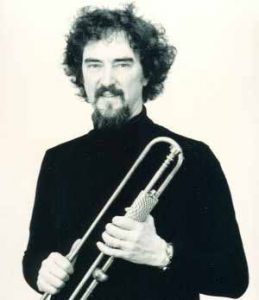
Edward Tarr holding a natural, Baroque trumpet.
Edward Tarr (born June 15, 1936) in Norwich, Connecticut, is a fine, classically trained American trumpet player and ground breaking musicologist. In 1953, Edward was a student of Roger Voisin, principal trumpet of the Boston Symphony Orchestra, and in 1958–1959 with Adolph Herseth, principal trumpet of the Chicago Symphony.
Early in his musical career, Edward Tarr moved to Europe and began his first trumpet soloist as well as brass ensemble recordings in 1960. In 1970, Edward resided in Basel Switzerland. In the late 1960’s Edward Tarr blossomed into becoming an internationally recognized pioneer in the revival of late Renaissance, Baroque (in particular) and Romantic era trumpet performance practice.
In 1968 the Edward Tarr Brass Ensemble was formed, the only one of its kind – with four trumpets and four trombones. Modern as well as antique instruments were used to perform Renaissance and Baroque music as well as modern works.
The recording that put Edward Tarr on the ‘map’ was released by Nonesuch Records in 1969 that was entitled “The Art Of The Baroque Trumpet”.
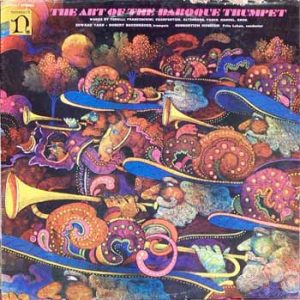
The Art of the Baroque Trumpet featuring Edward Tarr
The musical performances on trumpet as well as the accompanying orchestra were performed on musical instruments that were obtained from European Museums that were not used for live performance purposes for hundreds of years.
The trumpets were “Natural Trumpets” which are often referred to as ‘Baroque Trumpets’… A natural trumpet is a long, double-folded trumpet without valves. It was the trumpet used across Europe from the 15th through the mid 19th centuries, and is a common ancestor to all modern brass instruments. It is the trumpet that composers like Bach, Handel, Mozart, and Beethoven wrote for, and has had a resurgence in the past 50 years, since the late 1960’s in the performance of Baroque and Classical-era music.
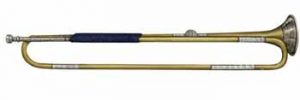
Natural – Baroque Trumpet
For additional information on Baroque or Natural Trumpets see…https://en.wikipedia.org/wiki/Baroque_trumpet

Edward Tarr holding a modern four rotary valve piccolo trumpet most likely of German origin
The quality of the musical performances on “The Art Of The Baroque Trumpet” recording are outstanding and the production values of this fine recording are equally outstanding. The artwork that is featured on the Album cover is also exceptional, unforgettable, and is reminiscent of the ‘Psychedelic Pop Art’ style of artwork that became popular in the late 1960’s in particular by way of the efforts of Peter Max and Alex Gray in particular.
Edward Tarr owned one of the world’s largest collections of original trumpet literature, which was acquired by the Royal Conservatoire of Scotland’s Archives & Collections in 2014.
Edward Tarr’s mastery of the modern piston valve family of trumpets, mastery of the modern rotary valve family of trumpets, plus the mastery of the long unused “natural” trumpet that was unused for hundreds of years sets Edward apart as a very talented and capable trumpet soloist.
Edward Tarr’s popularity as a classical trumpet soloist has been reinforced by innumerable live concert performances as well as over 100 recordings that bear the Edward Tarr name.
Edward Tarr’s tireless and enthusiastic devotion to the history and performance of long forgotten, but musically compelling musical literature is also immeasurable within the Musicological Universe.
Trumpeter, Bob Amato still has a treasured vinyl copy of the fine recording, “The Art Of The Baroque Trumpet” and this recording is just as compelling to listen to today as when it was first released 50 years ago in the late 1960’s.
Various Baroque Era Trumpet Concertos beautifully performed by Edward Tarr via the following YouTube hosted recording.
The Most Famous Piccolo Trumpet Solo Ever Recorded
The most famous piccolo trumpet solo ever recorded which had a distinctive ‘Baroque era’ musical flair was prominently featured in the famous 1967 Beatles recording of “Penny Lane”.
This piccolo trumpet solo was performed by the very accomplished English trumpet player David Mason. David Mason was a highly skilled orchestral, solo and recording session trumpet player.
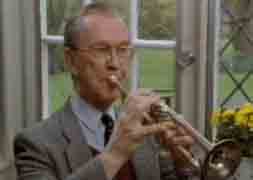
English orchestral trumpet player, David Mason played the famous Piccolo trumpet solo in the 1967 Beatles recording Penny Lane.
Mason played principal trumpet for seven years with the Royal Philharmonic Orchestra where Mason eventually became the principal trumpet player. After seven years in that role Mason moved to the London based Philharmonia under the direction of Otto Klemperer where he remained for most of the rest of his orchestral career performing principal trumpet. Mason also served as a professor of trumpet at the Royal College of Music for thirty years and taught many of the trumpet players who became the nucleus of the top tier orchestral trumpet players all over the United Kingdom in the late 20th and early 21st Centuries. The Penny Lane piccolo trumpet solo was inspired by Mason’s 1960’s era performance of Bach’s 2nd Brandenburg Concerto with the English Chamber Orchestra
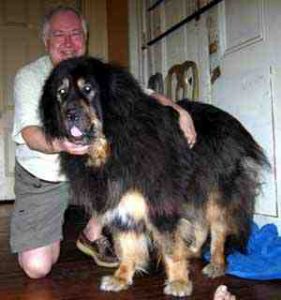
Essay Author, Bob Amato in New Orleans in 2012 visiting his best and only friend, ‘Wanna Be’ Bandleader, “Square Bear” – a 165 lb. Female Tibetan Mastiff that was 5 years old.
